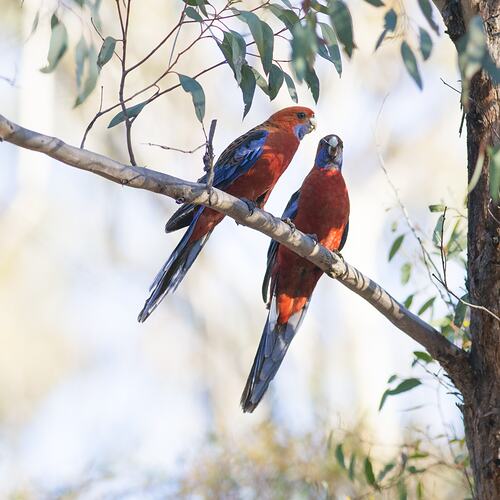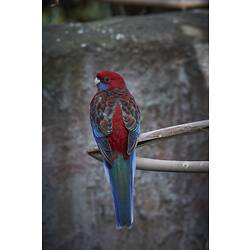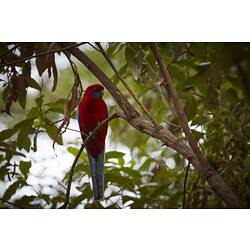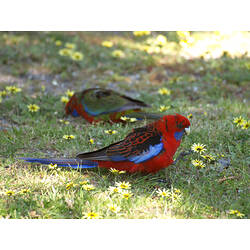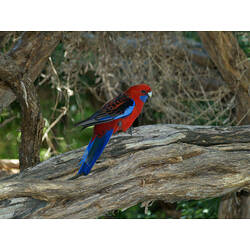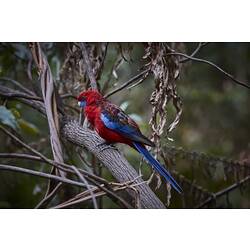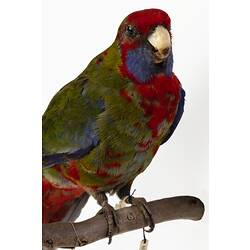General Description
Adults: body mostly red, cheek and upperwing have blue patches, upperparts and remainder of wings black with red edges. Juveniles: mostly green with forehead, breast and undertail red. Body up to 40 cm long.
Biology
Crimson Rosellas usually live solitarily or in pairs, sometimes forming flocks in winter. They feed mainly on seeds and fruit, foraging in trees and on the ground. Crimson Rosellas nest in hollows in high trees and breed from September to February. The female lays and incubates four to eight eggs and both parents feed the young after they hatch. There are five subspecies of Crimson Rosella, two of which, the Yellow Crimson Rosella and the Adelaide Rosella, have quite different colourations and distinct geographic distributions and were once thought to be different species because they look so different. They were reclassified as subspecies because they interbreed where their ranges overlap.
Distribution
Coastal Queensland, New South Wales, southern Victoria, southern New South Wales, and through Flinders Ranges, Kangaroo Island in South Australia.
Habitat
Wet forests and woodlands in mountain areas, also in urban areas.
More Information
-
Animal Type
-
Animal SubType
-
Brief Id
A dark red and blue parrot with a long pointed tail. They have a range of calls including metallic whistles.
-
Colours
Red, Blue
-
Maximum Size
40 cm
-
Habitats
-
Diet
Herbivore
-
Diet Categories
Seeds, Fruit
-
Endemicity
-
Commercial
No
-
Conservation Statuses
CITES: Trade restrictions (Appendix II), FFG Threatened List: Not listed, EPBC Act 1999: Not listed, IUCN Red List: Least Concern
-
Taxon Name
-
Common Name
Crimson Rosella
-
Kingdom
-
Phylum
-
Subphylum
-
Class
-
Order
-
Family
-
Genus
-
Species Name
elegans
